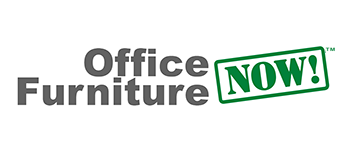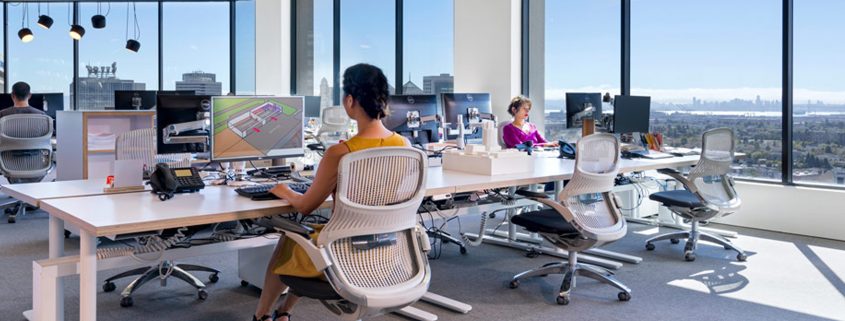The Workplace Wellness Experience
The workplace wellness experience takes on a deeper meaning post-pandemic. As we strive to regain footing and provide a safe, common-sense-driven workplace, open-plan hives of productivity will become more sheltered. Well-being will be in the driver’s seat with significant attention being paid to social distancing, visible housekeeping, and boundaries. Workstation areas will no longer have the crowded café feel, they will be de-densified to maintain social distancing. Every organization’s return to the office will be customized to its circumstances, but each will have a few commonalities:
- Perception is reality make sure what employees perceive is what they believe is happening
- Transparency is essential for building trust and managing misinformation for staff and clients
- Prevailing common-sense decisions with practical sound judgment should be evident
- Communication & research strategies for seamless reopening and future off-site work structure
WORKPLACE ASSESSMENT
During the shelter-in-place period and beyond, ongoing workplace research has become a tool for valuable insights. Work-from-home employees will continue to educate and inspire future remote working policies. Keep the lines of communication flowing by formulating inquiring questions and defining your research with methods like short surveys, virtual focus groups, or interviews. Enlist the services of a space planner/designer to review photographs of the workspace and create viable solutions for distancing and collaboration challenges. Gathering this information while employees are returning, with some still at home, is essential for fine-tuning workflow and productivity.
RESTORING CONNECTION
With a heightened sense of well-being, coworkers will become more eager to understand how they connect emotionally within the workplace. The consumer mindset is shifting toward embracing more organic design and furnishings in the built environment. The lockdown has produced a drive to be outside in the fresh air. Connecting your office design to nature may produce a more meaningful connection within the workspace environment. Natural workplace culture-building may include:
- Workplace designers curating designs based on amenities that may encourage outside meeting spaces, rather than confined indoor rooms.
- Design elements that support how people feel, think, and move can establish more casual, meaningful connections, and deepen brand connectivity.
- Waste is a resource. Repurposing, donating, or liquidating are all viable options for futurecasting, but it’s not as personal as allowing your employees to participate in change for a cause.
- For successful workplace culture buy-in, teams need to find a sense of brand connection. Providing transparency for what’s happening underneath the surface and behind the brand encourages lasting commitment.
PRODUCTIVE SOCIAL MEDIUMS
The “retail apocalypse” closed 12,000 stores in the last decade. COVID-19 may challenge small businesses grappling with those same decisions and struggling to stay afloat to invest in some out-of-the-box thinking. Reconnecting may find these smaller businesses networking into a united front, creating a new dynamic for their target audience. Reinventing themselves and the way they work can create a theatrical, social experience to draw in a different type of customer. There is little doubt that the small business matrix will be the most impacted by the lockdown. But focusing on reinvention and becoming a destination with a unique blend of products and services that groups of people want to visit together is one way to cope with the change. Fiscal well-being workplace strategies may include:
- Office design moving toward impactful spaces and tools that encourage and enhance collaborative work.
- People are innately social animals that head into the office to work with others — teamwork is increasing with no signs of slowing.
- Designing intentional workplaces that support teamwork and the cross-pollination of ideas outside of teams.
- Creating a social space where the staff has to be intentional about how they contribute fosters innovation and drives business success.
- Redefining how social media works for small businesses may require joining forces with a competitor or complementary service to solidify resilience in the new economy.
- If you downsized, why not invite small business coworking and entrepreneurial roundtables into those unused areas of your office to mentor and regroup.
FRICTIONLESS ENVIRONMENTS
Time is a new luxury, as we arrive back behind the desk to catch up from the past few weeks. Technology layered into the workplace augments the environment — helping people focus, prioritize time, and offload non-value-added tasks. Analog and digital elements are being integrated into the workplace in interesting ways to make things effortlessly easy.
Working from home has increased the need for more seamless connectivity. Technology has been striving to adapt to the virtual office for quite some time. As we return within phases and guidelines, we will continue to take advantage of flexible options. Furniture that lets teams quickly reconfigure and adjust to social distancing will be very important for the transition back into the office.
The hands-free workspace could see us walking into an office space where a digital assistant automatically books space for you (and can release it as well if you don’t show up). Innovation in materials science has already created the SILQ office chair, which responds to the inputs your body gives it with only one adjustment. When you are done, it can all be reset for the next group. So the future of work is already in development with technology at the helm.
COMMUNICATIONS & TRAINING
The level of organizational communication prevalent during the work-from-home period should be maintained after employees are allowed back into the office. Openly sharing protocols for visitors, social distancing, and housekeeping will establish a sense of trust that employees’ health, safety, and well-being will remain top priorities. Things will be different around the office post-COVID-19, and a robust training and change communications program will establish this “new normal.”
Office design is evolutionary. It will continue to address changes ahead and in the middle of the curve. Prepare for more design elements that support how people feel, think, and move. You’ll see more transparency from brands and products, and more ways to make meaningful connections and build relationships. More ways to make life easier at work and more ways to make things personal.
Our team has been staying up on these trends to advise and assist with upgrades and changes that you may need to make your workspaces compliant. We have assembled some industry-wide Workplace Reopening Strategies to help make your transition back to work as seamless as possible.
Photo from Gensler Sacramento





